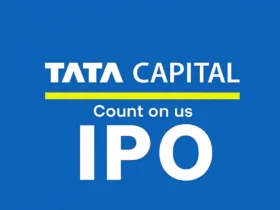A viral LinkedIn post by investment banker Sarthak Ahuja has sparked widespread discussion, claiming that a ₹70 lakh per annum (LPA) salary is no longer enough to live comfortably in India’s metro cities like Mumbai, Delhi, Gurgaon, and Bengaluru. Labelled as the “new middle class,” high earners are struggling to make ends meet by month-end due to soaring costs and high inflation.
The Numbers Behind the Struggle
Ahuja’s post breaks down the financial reality for someone earning ₹70 LPA:
- Take-Home Salary: After taxes, an individual earns about ₹4.1 lakh per month.
- Housing Costs: A ₹2 crore home loan for a ₹3 crore flat (common in metro cities) with a 20-year tenure at 8.5% interest results in a monthly EMI of ₹1.7 lakh. This consumes nearly half the take-home pay.
- Other Expenses:
- Rent or society maintenance: ₹30,000–₹80,000/month.
- School fees: ₹25,000–₹50,000/month per child.
- Car EMI, groceries, utilities, and transport: ₹50,000–₹1 lakh/month.
- Dining out or social expenses: ₹2,000–₹5,000 per outing, adding up quickly.
Ahuja warns, “By the end of the month, there’s nothing left!!!” The post advises young professionals to “think twice” before taking large home loans, as they trap earners in a cycle of debt with little savings for emergencies or retirement.
Why Is ₹70 LPA Not Enough?
The post highlights three key factors driving this financial strain:
- High Inflation: Over the past three years, costs for real estate, education, and lifestyle expenses have skyrocketed in cities like Mumbai and Bengaluru. For example, 2BHK rents in Mumbai often exceed ₹80,000/month.
- Social Pressures: Social media fuels a “ceremonious” lifestyle, pushing people to spend on dining, travel, or luxury goods to maintain status.
- Lack of Wealth-Building: High EMIs and daily costs leave little for investments or retirement funds, trapping even high earners in a “sub-middle class” cycle.
Posts on X echo this sentiment, with users noting that even ₹50 LPA feels like middle class after EMIs, taxes, and rising costs like ₹10,000/month parking or ₹15,000/month maintenance in Mumbai.
Is High Income No Match for Inflation?
India’s retail inflation, though estimated at 3% in May 2025, doesn’t fully capture the sharp rise in metro-specific costs like housing and education. A 2BHK in Mumbai or Gurgaon often costs ₹2–3 crore, requiring loans that eat up most of a ₹70 LPA salary. Meanwhile, lifestyle expectations driven by social media add pressure to spend rather than save.
Experts suggest:
- Renting vs. Buying: Renting may be smarter than a large home loan in high-cost cities.
- Financial Planning: Save 20–30% of income for investments like mutual funds or ETFs to build wealth.
- Side Income: Freelancing or side hustles can offset rising costs.
- Relocate: Consider Tier-2 cities like Pune or Chandigarh, where costs are lower but job opportunities are growing.
The Bigger Picture
Ahuja’s post underscores a stark reality in 2025: high salaries don’t guarantee financial freedom in India’s metro cities. As inflation outpaces income for many, young professionals must rethink homeownership, prioritize savings, and navigate social pressures to avoid the “nothing left” trap.
Have thoughts on metro city costs or tips for managing a high salary? Share them below.





Leave a Reply